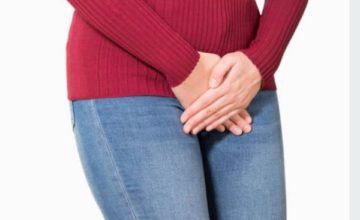A yeast infection is a common type of fungal infection. One place it targets is the genital area, which leads to pain, itching, and discharge. But what ways can a yeast infection be treated at home?
Women are more prone to genital yeast infections, with 75 percent experiencing at least one in their lives. However, men can also get a genital yeast infection.
A yeast called candida albicans is the most common cause of these infections. However, other types of yeasts can also be responsible.
A range of treatments is available for yeast infections, including many self-administered home remedies.
Keep reading to find out about some popular home remedies for yeast infections.
1. Apple cider vinegar
Apple cider vinegar has been found to inhibit the growth of candida albicans, the strain of fungi that typically causes yeast infections. To use this natural remedy, run a bath and add a half cup of apple cider vinegar and soak in the bath for at least 20 minutes. Because of apple cider’s ability to kill bacteria and fungi, it could also kill the healthy bacteria in the body. Dilute apple cider vinegar before using it.
2. Boric acid
Boric acid vaginal suppositories remedy yeast infections because of boric acid’s antiseptic properties. While research supports the use of these suppositories, it concludes that this should only be used for recurrent and hard to treat yeast infections. Because boric acid is so potent, milder treatments should first be used.
3. Coconut oil
Coconut oil, drawn from the flesh of coconuts, has naturally occurring antifungal properties. A Scientifical study found coconut oil can help inhibit the candida bacteria that causes yeast infections. To utilize this treatment, simply apply coconut oil to the affected area.
4. Cranberry juice or pills
Cranberry juice has been found to help with urinary tract infections by preventing the formation of the candida albicans (the fungus that causes yeast infections). While studies have not shown its ability to help cure candida albicans in the vagina, some women claim to have results. Cranberry juice and pills are also very high in vitamin C, which can also help prevent infection.
5. Douching
Over-the-counter douches may combat yeast infections and relieve inflammation and irritation. However, most studies show adverse effects of douching, and few studies give positive outcomes. According to the Office of Women’s Health, doctors recommend that women do not douche because douching can lead to problems getting pregnant, vaginal infections, and sexually transmitted infections (STIs).
6. Garlic
Garlic and garlic oil are well-known antifungal agents. Studies have even found it to have antifungal activity against candida albicans. While more traditional approaches may recommend inserting the garlic clove directly into the vagina, a less invasive approach is to simply add more fresh garlic to food and incorporate it into more meals.
7. Hydrogen peroxide
Hydrogen peroxide is a strong antiseptic that has been found to kill yeast. It has not been studied specifically on vaginal infection strains of yeast. Before applying to the vagina, be sure to dilute the hydrogen peroxide first.
8. Oregano oil
Oregano oil, or origanum oil, has been shown to inhibit the growth of candida albicans. To use oregano oil, use a couple of drops in a carrier agent, like coconut oil or olive oil, and apply to the affected area.
9. Probiotics
Probiotics contain live bacteria, such as the bacteria Lactobacillus acidophilus, which helps foster a healthy balance of bacterias in the vagina. They may treat or prevent bacterial vaginosis and urinary tract infections in addition to yeast infections.




